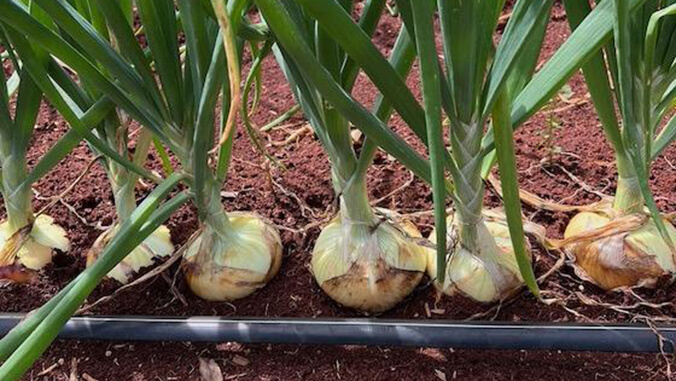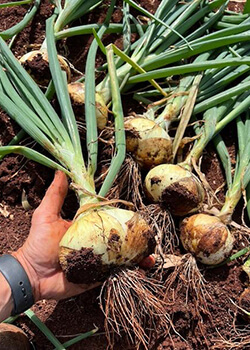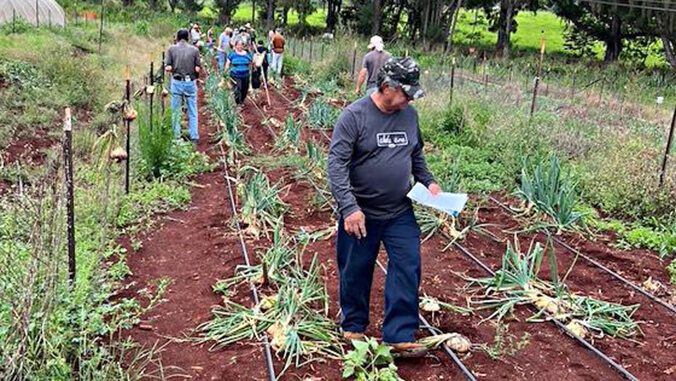
Due to length of day having an effect on sweet onion bulb development, Hawaiʻi farmers have historically been limited to growing “short-day” onions, especially during the winter when daylight hours are shorter.
To inform others on how to optimize short-day onion growth in the shorter days of the year, University of Hawaiʻi at Mānoa College of Tropical Agriculture and Human Resources (CTAHR) Oʻahu County Extension agents invited the community to the Poamoho Experiment Station, introducing them to some of the best short-day sweet onion varieties.

Each participant was able to observe varieties of short-day sweet onions in the field, as well as harvest bulbs they were interested in tasting. The hands-on experience gave the community and sweet onion farmers the knowledge to make more informed decisions on which varieties would maximize yield during shorter days.
“It was great being able to physically show the community how the onions were grown and their potential in the field,” said Associate Extension Agent Jensen Uyeda. “Many times as researchers we show presentations and reports, but when participants get a chance to pull a mature onion from the field, it gives a greater appreciation, which hopefully sparks more interest in producing this crop. We hope it will help increase the success of sweet onion production in Hawaiʻi, and lead to increased supply of local sweet onions in local markets.”
Uyeda added that CTAHR Extension continues to conduct research on sweet onions to identify new and more productive varieties, as well as best management practices to help commercial onion producers stay in or even expand production.
“I expect to conduct this field trial again in the summer to see how the same varieties do during the longer days, and then develop a more comprehensive planting schedule for the whole year so that the industry can maximize their yields all year long,” said Uyeda. “We also expect to conduct shelf stability studies once we identify the more productive varieties. The storage capability without refrigeration of bulb onions makes it a good crop from a food security standpoint.”
Read the full story at the CTAHR website.


